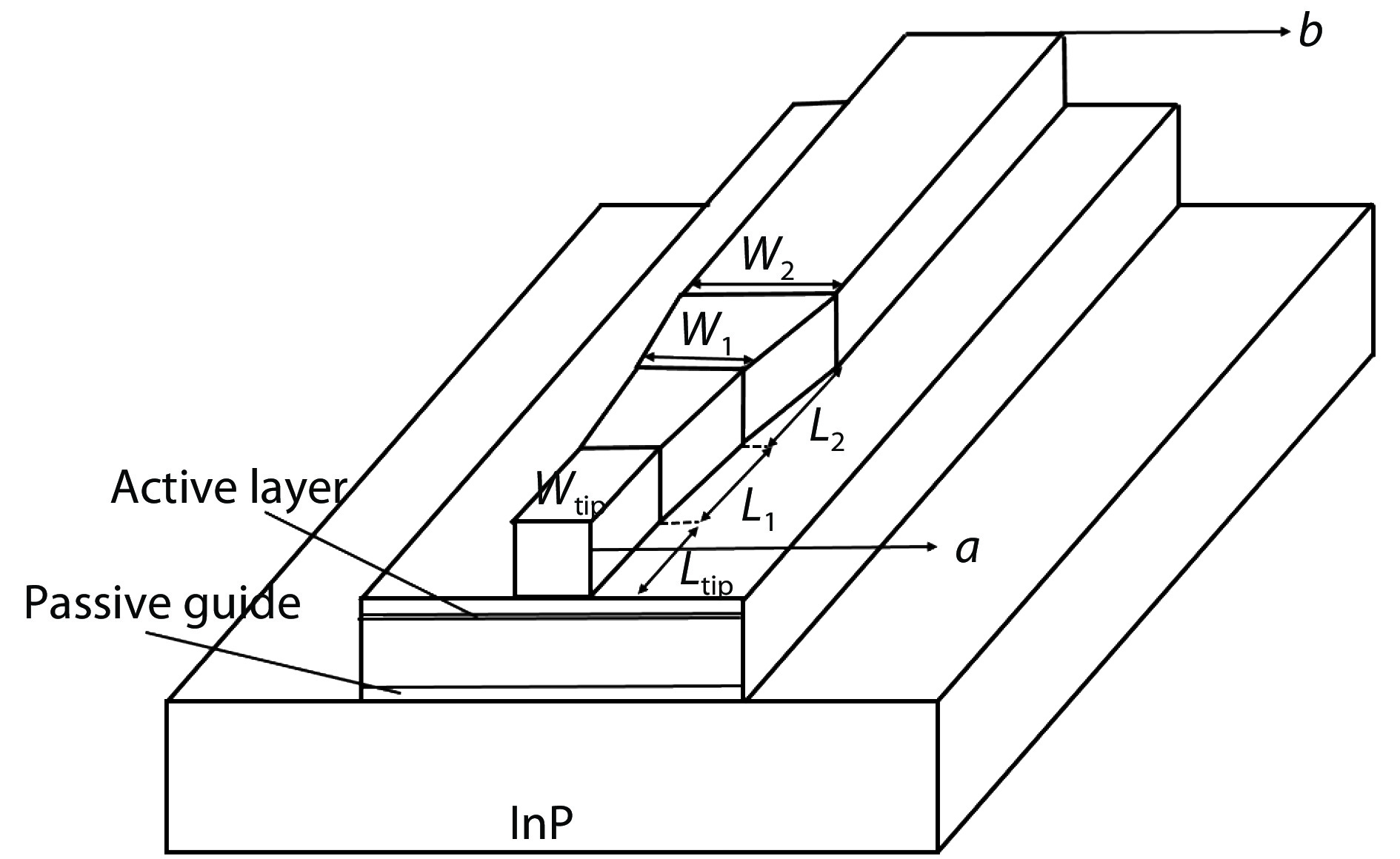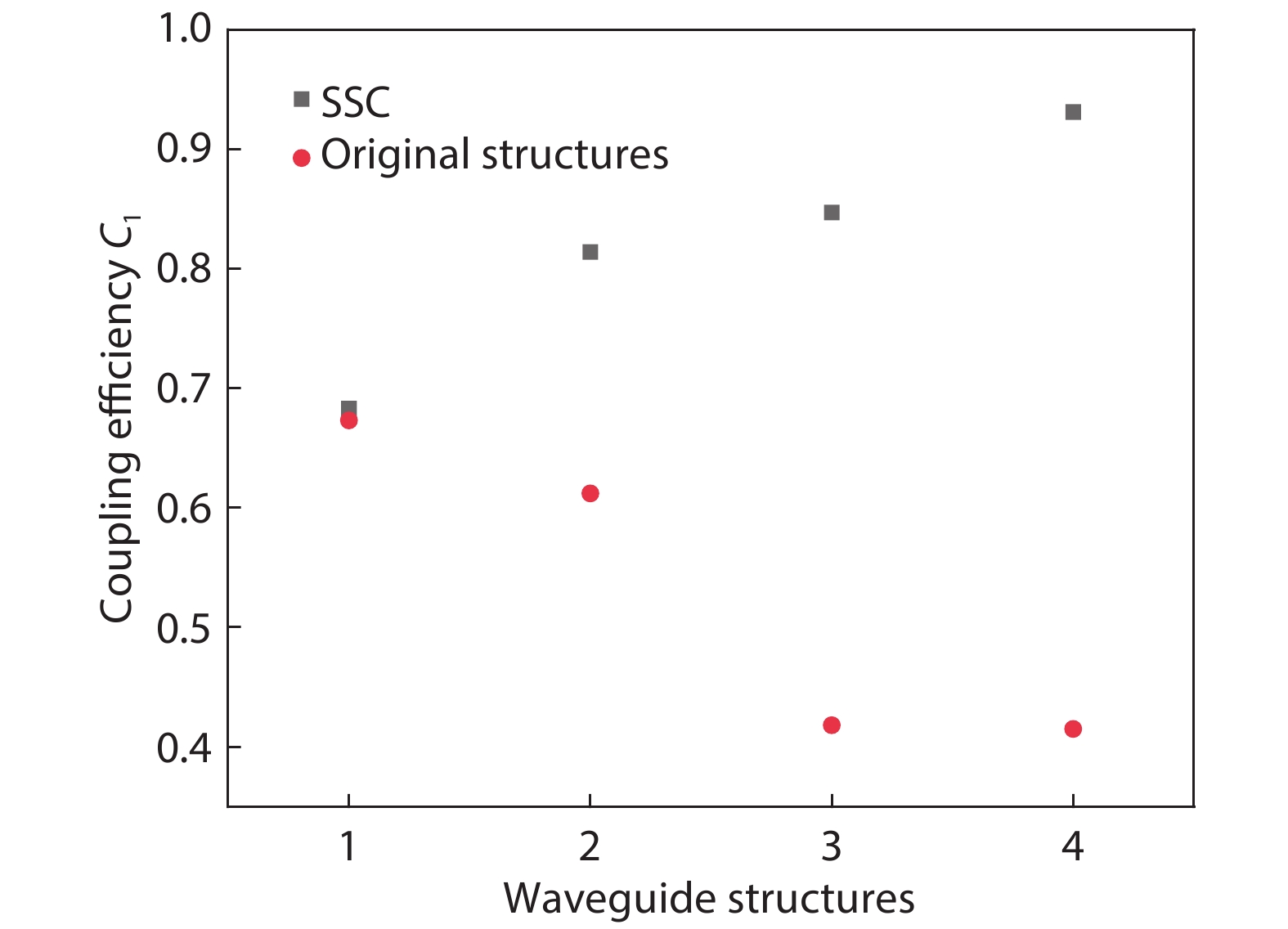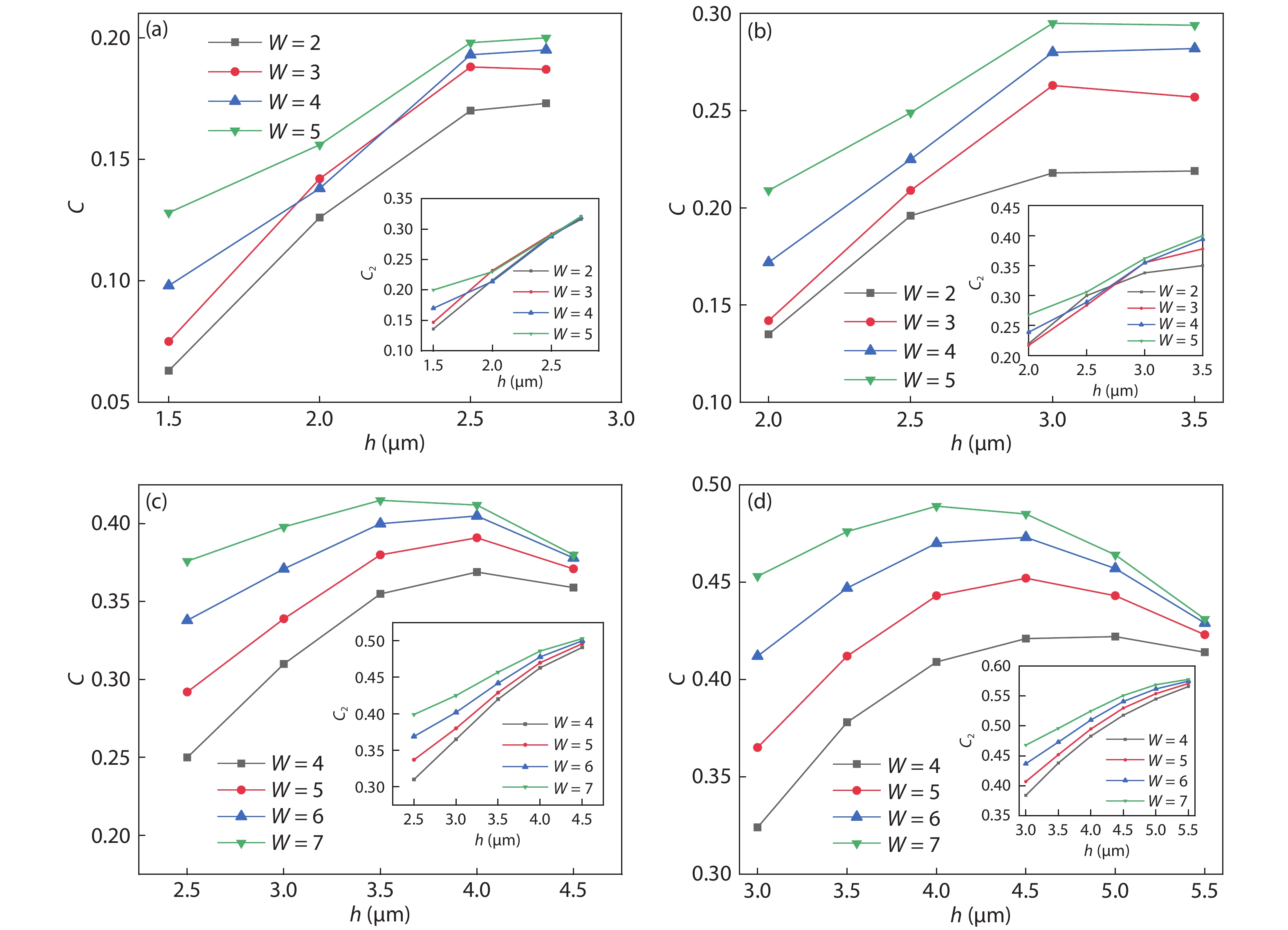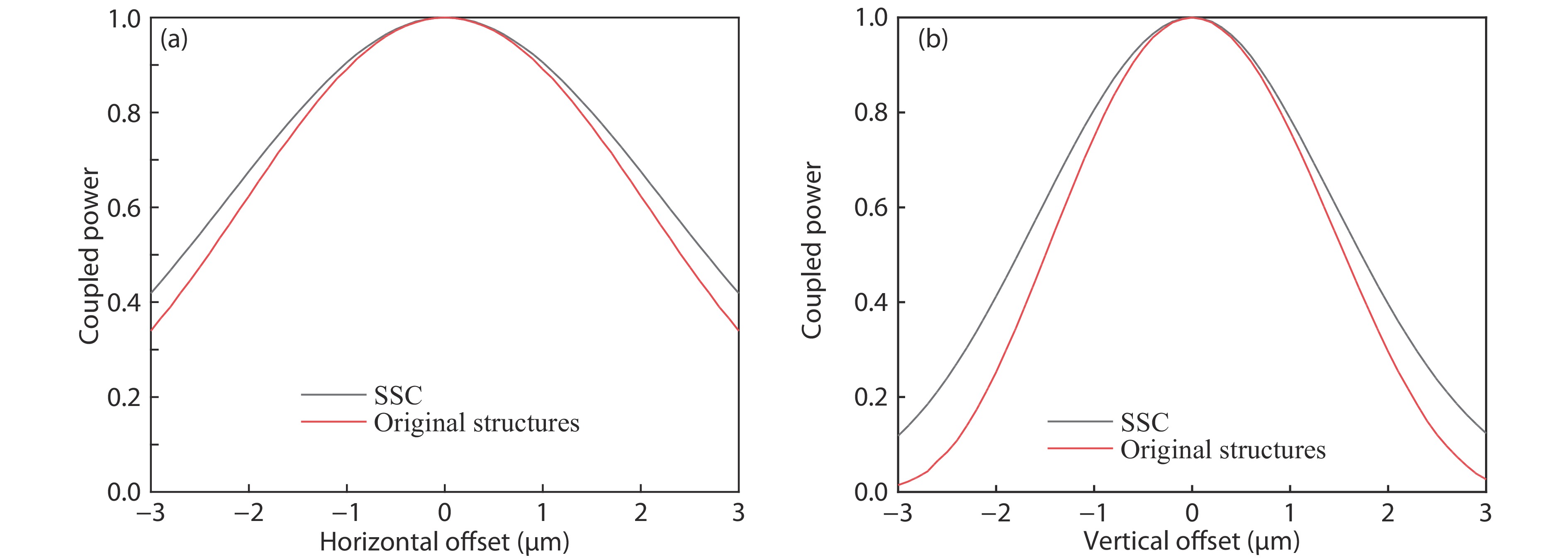| Citation: |
Yangjie Zhang, Wentao Guo, Di Xiong, Xiaofeng Guo, Wenyuan Liao, Haifeng Liu, Weihua Liu, Manqing Tan. Simulation of structural design with high coupling efficiency in external cavity semiconductor laser[J]. Journal of Semiconductors, 2019, 40(10): 102302. doi: 10.1088/1674-4926/40/10/102302
****
Y J Zhang, W T Guo, D Xiong, X F Guo, W Y Liao, H F Liu, W H Liu, M Q Tan, Simulation of structural design with high coupling efficiency in external cavity semiconductor laser[J]. J. Semicond., 2019, 40(10): 102302. doi: 10.1088/1674-4926/40/10/102302.
|
Simulation of structural design with high coupling efficiency in external cavity semiconductor laser
DOI: 10.1088/1674-4926/40/10/102302
More Information
-
Abstract
For external cavity semiconductor lasers (ECSLs), high coupling efficiency is critical to reducing the linewidth. In this paper, the coupling efficiency between the laser diode and the waveguide grating has been improved, with proposals for its improvement presented, including adding spot-size conversion (SSC) and using a silicon-on-insulator (SOI) waveguide. The results indicate an increase of coupling efficiency from 41.5% to 93.1%, which exhibits an improvement of approximately 51.6% over conventional schemes. The relationship between coupling efficiency and SOI waveguide structures is mainly concerned in this article. These findings provide a new way for the future research of the narrow linewidth of ECSL.-
Keywords:
- spot-size conversion,
- coupling efficiency,
- SOI waveguide
-
References
[1] Lu B, Wei F, Zhang Z, et al. Research on tunable local laser used in ground-to-satellite coherent laser communication. Chin Opt Lett, 2015, 13(9), 091402 doi: 10.3788/COL201513.091402[2] Mroziewicz B. External cavity wavelength tunable semiconductor lasers-a review. Opto-Electron Rev, 2008, 16(4), 347 doi: 10.2478/s11772-008-0045-9[3] Konosuke A, Shuhei K, Masashi W, et al. Stable and narrow linewidth semiconductor laser assembly with coherent optical negative feedback. Conference on Lasers and Electro-Optics, OSA Technical Digest, 2017[4] Liu B, Tong X, Jiang C Y, et al. Development of stable, narrow spectral line-width, fiber delivered laser source for spin exchange optical pumping. Appl Opt, 2015, 54(17), 5420 doi: 10.1364/AO.54.005420[5] Fang W, Fei Y, Zhang X, et al. Subkilohertz linewidth reduction of a DFB diode laser using self-injection locking with a fiber Bragg grating Fabry-Perot cavity. Opt Express, 2016, 24(15), 17406 doi: 10.1364/OE.24.017406[6] Hisham H K, Mahdiraji G A, Abas A F, et al. Linewidth optimization in fiber grating Fabry-Perot laser. Opt Eng, 2014, 53(2), 026107 doi: 10.1117/1.OE.53.2.026107[7] Liu D P, Chen C, Qin L, et al. Study on linewidth characteristics of fiber grating external cavity semiconductor laser. Semicond Optoelectron, 2016, 37(2), 165[8] Henry C H. Theory of the linewidth of semiconductor lasers. IEEE J Quantum Electron, 1982, 18(2), 259 doi: 10.1109/JQE.1982.1071522[9] Chai Y J, Zhang H Y, Zhou B K. Line width performance and lysis of semiconductor lasers with strong feed back external cavity. Chin J Semicond, 1995, 16(12), 885[10] Pan B W, Yu L Q, Lu D, et al. 20 kHz narrow linewidth fiber Bragg grating external cavity semiconductor laser. Chin J Lasers, 2015, 42(05), 49 doi: 10.3788/CJL201542.0502007[11] Alalusi M, Brasil P, Lee S, et al. Low noise planar external cavity laser for interferometric fiber optic sensors. Proc SPIE, 2009, 7316[12] Vusirikala V, Saini S S, Bartolo R E, et al. Compact mode expanders using resonant coupling between a tapered active region and an underlying coupling waveguide. IEEE Photonics Technol Lett, 1998, 10(2), 203 doi: 10.1109/68.655358[13] Bissessur H, Graver C, Gouezigou O L, et al. Ridge laser with spot-size converter in a single epitaxial step for high coupling efficiency to single-mode fibers. IEEE Photonics Technol Lett, 1998, 10(9), 1235 doi: 10.1109/68.705601[14] Tsuchizawa T, Watanabe T, Yamada K, et al. Microphotonics devices based on silicon microfabrication technology. IEEE J Sel Top Quantum Electron, 2005, 11(1), 232 doi: 10.1109/JSTQE.2004.841479[15] Soref R A, Schmidthen J, Petermann K. Large single-mode rib waveguide in GeSi and Si-on-SiO2. IEEE J Quantum Electron, 1991, 27(8), 1971 doi: 10.1109/3.83406[16] Richman A G, Ree G T, Namavar F. Silicon-on-insulator optical rib waveguide loss and mode characteristics. J Lightwave Technol, 1994, 12(10), 1771 doi: 10.1109/50.337489[17] Sumy M, Steffen S, Ralf S, et al. Geometrical tolerance of optical fiber and laser diode for passive alignment using LTCC technology. German Microwave Conference, 2015, 363 doi: 10.1109/GEMIC.2015.7107828[18] Romero-Garcia S, Marzban B, Merget F, et al. Edge Couplers with relaxed alignment tolerance for pick-and-place hybrid integration of III–V lasers with SOI waveguides. IEEE J Sel Top Quantum Electron, 2014, 20(4), 369 doi: 10.1109/JSTQE.2013.2292523[19] Shen P K, Chen C T, Chang C H, et al. Implementation of chip-level optical interconnect with laser and photodetector using SOI-based 3-D guided-wave path. IEEE Photonics J, 2014, 6(6), 1 doi: 10.1109/JPHOT.2014.2366165 -
Proportional views






 DownLoad:
DownLoad:





















